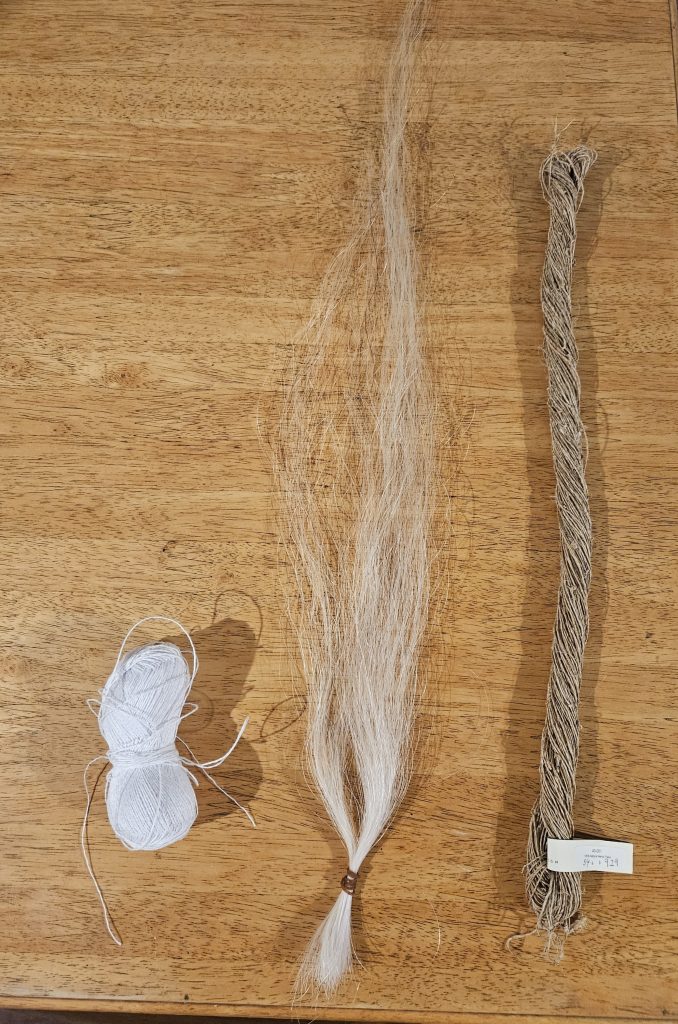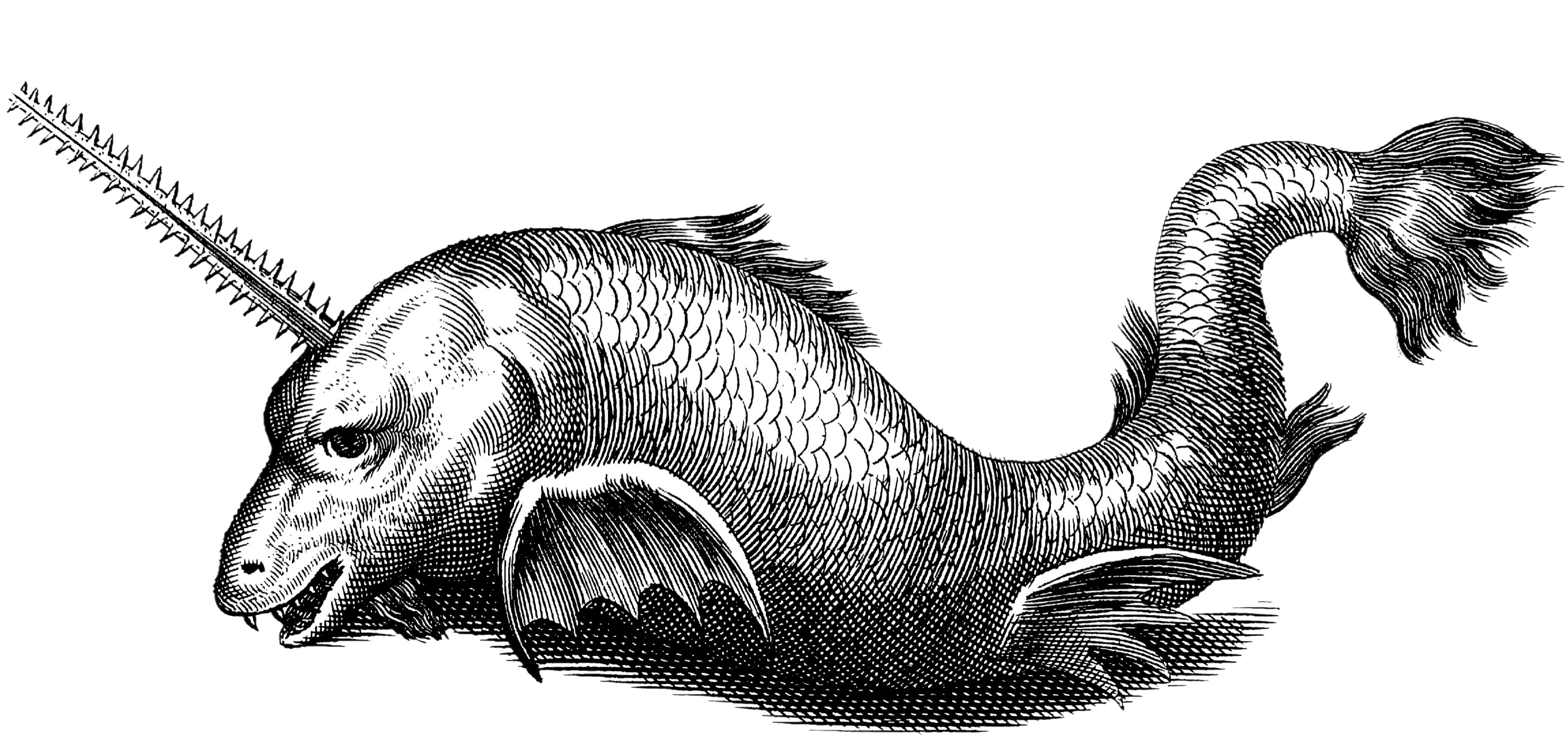Before we can start testing the strengths and weaknesses of different types of medieval fishing line, we have to source our materials. As we mentioned in our introduction and proposal, the three materials we decided to test as fishing line were linen, hemp, and horsehair.
We had hoped to be able to find the hemp and linen together at a yarn store locally, but unfortunately none of the shops we visited had any 100% hemp in stock, only blends, and we did not want to use blended material for authenticity and repeatability reasons. Therefore we ordered the hemp from Sanjo Silk, a weaving studio on Granville Island in Vancouver for around 12 dollars after tax and shipping. The hemp from Sanjo Silk is described as hand-spun, start to finish, by a handwork group in Nepal, and underwent minimal processing according to their website. The hope was that aside from harvesting it ourselves, this would be one of the most natural and authentic options that would at least to some extent reflect how hemp was harvested and spun in medieval Europe.
We were able to find linen at Beehive Wool Shop in downtown Victoria, and purchased one white linen yarn for approximately 10 dollars. The medieval source A Treatyse of Fysshynge wyth an Angle mentions how materials such as white horsehair would often be dyed in its use as fishing line, so we decided to to go with white linen as well. The amount of linen and hemp we bought should hopefully be plenty for our experiment, but we can always acquire more as we need. The materials are shown in the image below, displaying the linen, horsehair, and hemp, respectively, from left to right.

The three materials from left to right: linen, horsehair, hemp
The horsehair was the first material we acquired and deserves a spotlight. It was taken from the tail of a white Andalusian mare, which is a very interesting breed choice for our purposes. The Andalusian, also more officially known as the Purebred Spanish Horse (PRE), was recognized as a distinct breed as early as the 15th century and is an important horse breed in European history for several reasons.
Firstly, it is descended from the long lineages of Iberian horse breeds, particularly from the region of Andalusia, which were used since before Roman occupation of the Iberian peninsula as warhorses due to their strong builds and easy-going nature. According to the US Equestrian Federation, it is one of the oldest known horse breeds (USEF, 2023). The breed emerged out of the ubiquitous Iberian warhorses of the medieval period, becoming a recognized breed by the 15th century. The same traits that made it such an effective cavalry horse also made it very popular for centuries among European nobility, and this role as a prized noble horse was the precursor to the modern usage of the Pure Spanish Horse, which is typically for competing in Dressage events. The official page of the Andalusian horse on the United States Equestrian Federation website refers to it as the “Horse of Kings” (United States Equestrian Federation, 2023). With their long tails and beautiful manes, they are also often used for parades and display purposes.
The horse whose hair is being used for this experiment is a sixteen year old white Andalusian mare named Golosa (Spanish for sweet tooth), who competes in Dressage events on Vancouver Island and spends her days exploring trails and eating her favourite snacks at her home in Metchosin, B.C., Canada.

Golosa eating grass in the sun after returning from an event.
Of course, the average medieval fisherman would almost certainly not be using line made from the hair of a breed of horse usually reserved for use by nobility. Nevertheless, it is an authentic medieval horse breed with white tail hair, which is what was often used — after being dyed a different colour– for fishing line according to the source A Treatyse of Fysshynge wyth an Angle. As shown in the two images above, Golosa has quite a thick tail and therefore we did not need to take very much of it in order to have a significant amount of hair.
United States Equestrian Federation. (2023) Andalusian/Lusitano. https://www.usef.org/compete/breeds/andalusian-lusitano
